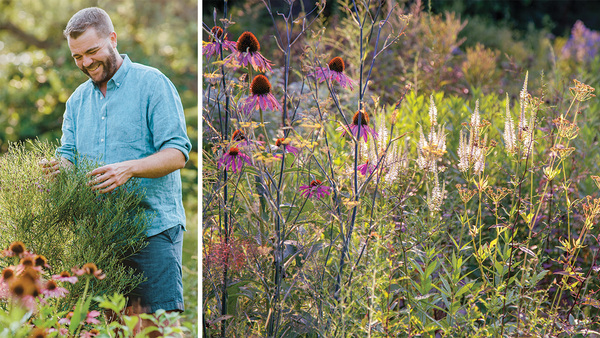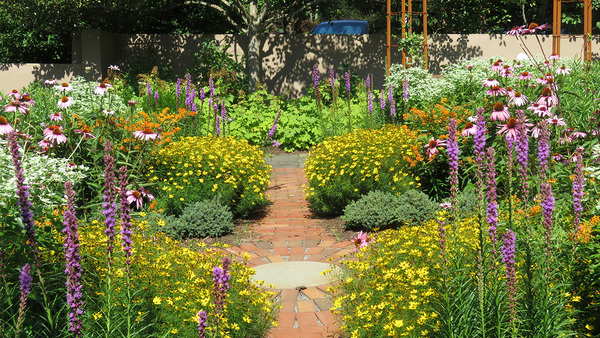
Ecological generalists—plants with broad tolerances to where they root—power the planet. Many of these species lurk in the shadows of traditional gardens or sulk in obscurity on the garden floor. But prevalence is their virtue; they have adapted to a wide range of growing conditions across a considerable geographic footprint. You may find plants on this list you’ve previously regarded as weeds, perhaps only because you didn’t know their whole story. They don’t have to earn top billing; every garden needs a supporting cast. Many on this list work hard at a valuable moment of the year before yielding the stage to the showier flowers we’ll quickly snap for our Instagram feed. Here’s a handful of my favorite generalists, many of which are native across North America, that deserve a closer look.
Pussytoes
Name: Antennaria spp.
Zones: 3–8
Size: Up to 8 inches tall and 18 inches wide
Conditions: Full sun; average to dry, well-drained soil
Native range: Most of North America
This is a genus of nearly 40 low-growing, silvery-leaved plants that form tight mats of foliage between other plants, particularly in meadows or at rock outcroppings or woodland edges.
Meadow sedge
Name: Carex praegracilis
Zones: 4–9
Size: Up to 2 feet tall and 3 feet wide
Conditions: Full sun to partial shade; thrives in a wide range of soil conditions
Native range: Western North America
Just one of hundreds of useful sedges native to North America, meadow sedge spreads by small rhizomes to form bunchy crowns of finely textured foliage.
Purple lovegrass
Name: Eragrostis spectabilis
Zones: 4–9
Size: Up to 18 inches tall and wide
Conditions: Full sun; average to dry, well-drained soil
Native range: Eastern and central United States and Canada
This showy summer grass starts the season out as an inconspicuous tussock that erupts into a cotton-candy cloud of pink and red. The plants spread gradually by rhizomes.
Annual fleabane
Name: Erigeron annuus
Zones: Annual
Size: Up to 3 feet tall and wide
Conditions: Full sun; thrives in a wide range of soil conditions
Native range: Most of North and Central America
Prized in Europe for its wildflowery personality, this native annual makes an easy, foamy spackle for all sorts of plantings. Plant size can vary, depending on soil conditions and competition from neighboring plants.
Wild strawberry

Name: Fragaria virginiana
Zones: 5–9
Size: 6 inches tall and 24 inches wide
Conditions: Full sun to partial shade; thrives in a wide range of soil conditions
Native range: Most of North America
Growing from coast to coast, the common wild strawberry proves an effective interloper between taller perennials and shrubs. Spring flowers and early summer fruit are a seasonal treat.
Selfheal
Name: Prunella vulgaris
Zones: 3–9
Size: 6 inches tall and 2 feet wide
Conditions: Full sun to partial shade; thrives in a wide range of soil conditions
Native range: Most of North America
Found across the globe in a seemingly endless array of colors, this hardworking ground cover tolerates browsing and mowing. It is an ideal component for no-mow or low-mow lawns.
Kelly D. Norris is the author of New Naturalism: Designing and Planting a Resilient, Ecologically Vibrant Home Garden.
Photos, except where noted: Kelly D. Norris
Fine Gardening Recommended Products

Ho-Mi Digger - Korean Triangle Blade
Fine Gardening receives a commission for items purchased through links on this site, including Amazon Associates and other affiliate advertising programs.

A.M. Leonard Deluxe Soil Knife & Leather Sheath Combo
Fine Gardening receives a commission for items purchased through links on this site, including Amazon Associates and other affiliate advertising programs.

Planting in a Post-Wild World: Designing Plant Communities for Resilient Landscapes
Fine Gardening receives a commission for items purchased through links on this site, including Amazon Associates and other affiliate advertising programs.























Comments
Log in or create an account to post a comment.
Sign up Log in